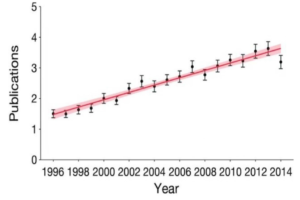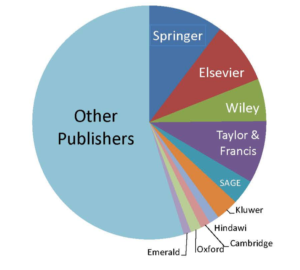AAG Announces 2020 AAG Award Recipients
The American Association of Geographers congratulates the individuals and entities named to receive an AAG Award. The awardees represent outstanding contributions to and accomplishments in the geographic field. Formal recognition of the awardees will occur at the 2020 AAG Annual Meeting in Denver, CO during the AAG Awards Luncheon on Friday, April 10, 2020.
2020 AAG Harm de Blij Award for Excellence in Undergraduate Teaching
This annual award recognizes outstanding achievement in teaching undergraduate Geography including the use of innovative teaching methods. The recipients are instructors for whom undergraduate teaching is a primary responsibility. The award consists of $2,500 in prize money and an additional $500 in travel expenses to attend the AAG Annual Meeting, where the award will be conveyed. This award is generously funded by John Wiley & Sons in memory of their long-standing collaboration with the late Harm de Blij on his seminal Geography textbooks.
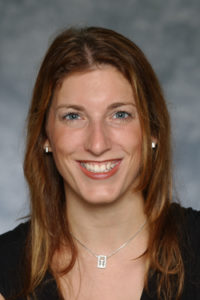
Dr. Jennifer Collins, University of South Florida
Dr. Jennifer Collins, a Professor of Geosciences at the University of South Florida, is described by her colleagues as a highly respected role model (especially for female students in STEM) and passionate about undergraduate education. Dr. Collins designs her courses to offer high impact learning experiences to her students. She has co-published with numerous undergraduate students, and routinely includes undergraduate mentoring and collaboration in her research grants. However, her impact goes far beyond her own students. Dr. Collins engages in numerous well-recognized community outreach projects herself, such as providing workshops for K-12 teachers and promoting geography in the media. One colleague described her as “… not only [having] impacted the field, students, and the community at large, but [she] is also a good steward of the environment, imparting those values onto others.” Similarly, another colleague describes her as a “true collaborator” with a strong “devotion to the university, our students, and her profession at large”. For all these reasons, we are pleased to recognize Dr. Jennifer Collins with the 2020 AAG Harm de Blij Award.
2020 AAG Presidential Achievement Award
The AAG Presidential Award is given with the purpose of recognizing individuals for their long-term, major contributions to geography. The Past President has the honor of bestowing this distinction on behalf of the discipline and the association.
 Nicholas Dunning, University of Cincinnati
Nicholas Dunning, University of Cincinnati
Nicholas Dunning, University of Cincinnati, for his significant contributions in the areas of environmental archaeology, soils, physical geography, cultural ecology, and Latin America. Dr. Dunning’s contributions include keen insights into human ecology and the environment, especially as applied to the Ancient Maya. Dunning has three degrees in geography, yet the broader impacts of his work range far beyond geography into anthropology and archaeology, to epigraphy, soil chemistry, pre-Columbian Studies, and Latin American Studies.
He published his dissertation as the book Lords of the Hills: Ancient Maya Settlement in the Puuc Region, Mexico (Prehistory Press, 1992) and this volume remains one of the most influential and best cited works in our field. Dunning has since published more than 125 peer-reviewed papers and chapters and a dozen books, monographs, and special issues of journals, across different fields, from Culture and Agriculture in 1998 and the AAG Annals in 2002, to two articles in a special issue of Proceedings of the National Academy of Sciences in 2012, to a paper applying LiDAR in Maya Geoarchaeology in a special issue of the journal Geomorphology.
Dr. Dunning has led his research teams and generations of students on an amazing journey, without ever thinking of rewards for himself. It is Dunning’s time to be celebrated as the most influential scholar in geoarchaeology, cultural ecology, and environmental and physical geography in our generation and many to come.
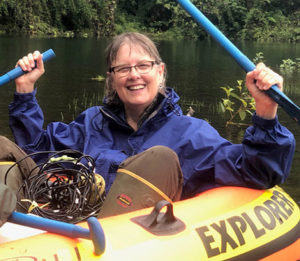 Sally Horn, University of Tennessee
Sally Horn, University of Tennessee
Sally Horn, University of Tennessee, for her significant contributions in the area of paleoenvironmental change research in underexplored neotropical regions. Dr. Horn’s research contributes new knowledge in tropical environmental change, and in methodological advances for detecting and measuring change.
Her scholarship has been honored at university, national and international levels, including the Carl O. Sauer Award (Conference of Latin American Geographers, 2002) the AAG’s Barry Bishop Mountain Geography Award (2010), AAG’s James J. Parsons Biogeography Specialty Group Award (2014), the SEDAAG Lifetime Achievement Award (2014), and election as a AAAS Fellow in 2003.
Dr. Horn is also recognized for her enthusiastic devotion to educating the next generation of scientists, as evidenced by her many teaching and advising awards, and by her extraordinary productivity of graduate students. Dr. Horn has advised 34 Masters and 14 PhDs (including 6 in progress), and also served on the committees of 99 MA and PhD Students, in programs ranging from Geography to Anthropology to Ecology. The lasting impact of her scholarship is evidenced by her more than 150 peer-reviewed articles, book chapters and edited volumes, and by her multiple grants from such sources as NSF, the Mellon Foundation, and the US Fish and Wildlife Service.
The 2020 AAG-Kauffman Awards for Best Paper and Best Student Paper in Geography & Entrepreneurship
This award identifies innovative research in business, applied or community geography that is relevant to questions related to entrepreneurs and their firms as well as to practitioners and policymakers. Award winners and runners up will be invited to present their research in a session highlighting geography and entrepreneurship at the AAG Annual Meeting on Thursday, April 9, 2020.
2020 Best Paper Award
Keith Debbage, University of North Carolina – Greensboro, Non-Farm Proprietorship Employment by US Metropolitan Area
2020 Best Paper Award Runner-Up
Joseph Scarpaci, Center for the Study of Cuban Culture + Economy, Scarpaci, J.L., Coupey, E. and Reed, S. 2018; Artists as Cultural Icons: The Icon Myth Transfer Effect as a Heuristic for Cultural Branding. (Journal of Product & Brand Management. 27(3): 320-333)
2020 Best Student Paper Award
Andreas Kuebart, Leibniz Institute for Research on Society and Space, Open creative labs as providers of core functions within entrepreneurial ecosystems: Using sequence analysis to explore new infrastructures for startup processes in Berlin
2020 Best Student Paper Award Runner-Up
Yue Lin, The Ohio State University, A deep learning architecture for semantic address matching
The 2020 AAG Marcus Fund for Physical Geography Award
The objective of The Mel Marcus Fund for Physical Geography is to carry on the tradition of excellence and humanity in field work espoused by Dr. Melvin G. Marcus. Grants from the Mel Marcus Fund for Physical Geography will foster personally formative participation by students collaborating with faculty in field-based physical geography research in challenging outdoor environments.
Frederick (Fritz) Nelson, Michigan State University
Project: Baseline Data for a Field-Based Critical Geomorphic Experiment in the Juneau Icefield Research Program’s Camp 29 facility on the Cathedral Massif near Atlin, British Columbia, Canada
The 2020 William L. Garrison Award for Best Dissertation in Computational Geography
This biennial award supports innovative research into the computational aspects of geographic science. The award is intended to arose a deeper general understanding of the important role that advanced computation can play in the complex problems of space-time analysis, that lie at the core of geographic science.
Taylor Anderson, Simon Fraser University, Towards the Integration of Complex Systems Theory: Geographic Information Science, and Network Science for Modelling Geospatial Phenomena
This grant enables people, regardless of any formal training in geography, to engage in useful field studies and to have the joy of working alongside their partners.
Joshua Steckley, University of Toronto, will conduct community based research in Thailand with his partner, Marylynn Steckley, for their project titled: The Political Ecology of Coconut Water: how Thailand exports health, and imports obesity
2020 Dissertation Research Grant recipients ($1,000/each)
The AAG provides support for doctoral Dissertation Research in the form of grants up to $1,000 to PhD candidates of any geographic specialty.
Madeleine Hamlin, Syracuse University
Shannon Jones, University of Denver
Veronica Limeberry, American University
Maegan Miller, CUNY – Graduate Center
Audrey Smith, University of Florida
Yining Tan, Arizona State University
Greta Wells, University of Texas at Austin
2020 Research Grant recipients ($500/each):
The AAG provides small Research Grants of $500 to support direct costs for fieldwork and research.
Perry Carter, Texas Tech University
Sean Kennedy, University of Illinois Urbana-Champaign
Aaron Malone, Colorado School of Mines
Emily Mitchell-Eaton, Bennington College
Jennifer Rice, University of Georgia
David Trimbach, Oregon State University
2020 AAG Darrel Hess Community College Geography Scholarships
Outstanding students from community colleges, junior colleges, city colleges, or two-year educational institutions who will be transferring as geography majors to four-year universities receive support and recognition from this scholarship program, including $1,000 for educational expenses. The scholarship has been generously provided by Darrel Hess of the City College of San Francisco to 29 students since 2006.
Cassia Barnard-Royer, transferring from Santa Fe College to the University of Florida
Laurel Durbin, transferring from Shasta College to CSU Chico
Valeria Ferrufino, Irvine Valley College (awaiting responses from UCLA, UC Berkeley, UC Santa Barbara, and CSUs)
Mary Anne Flier, transferring from Grand Rapids Community College to Aquinas College
Andrew Mendez, transferring from East Los Angeles College to CSU Northridge
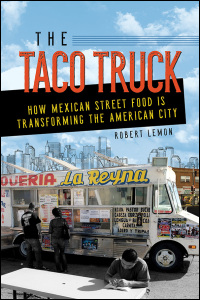

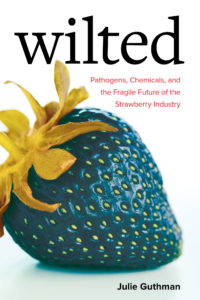


 The most recent issue of The Professional Geographer has been published online (
The most recent issue of The Professional Geographer has been published online (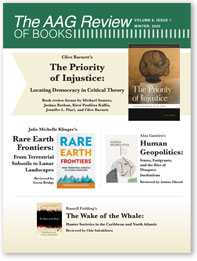 The latest issue of the AAG Review of Books is now available (
The latest issue of the AAG Review of Books is now available (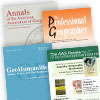 In addition to the most recently published journal, read the latest issue of the other AAG journals online:
In addition to the most recently published journal, read the latest issue of the other AAG journals online: From geoengineering to industrial landscapes of Pittsburgh, there are always new titles in geography and related disciplines to be found on the New Books in Geography list. Some of these books will be reviewed in the AAG Review of Books. Persons wishing to volunteer their reviewing services for new books should have the requisite qualifications and demonstrable prior knowledge and engagement with the subject area, preferably through publications. Please contact the editors at
From geoengineering to industrial landscapes of Pittsburgh, there are always new titles in geography and related disciplines to be found on the New Books in Geography list. Some of these books will be reviewed in the AAG Review of Books. Persons wishing to volunteer their reviewing services for new books should have the requisite qualifications and demonstrable prior knowledge and engagement with the subject area, preferably through publications. Please contact the editors at  Congratulations to the recipients of 2020 AAG Awards including the E. Willard and Ruby S. Miller Award, the Glenda Laws Award, the Wilbanks Award for Transformational Research in Geography, and the new AAG Award for Associates Program Excellence! Formal recognition of the awardees will occur during the
Congratulations to the recipients of 2020 AAG Awards including the E. Willard and Ruby S. Miller Award, the Glenda Laws Award, the Wilbanks Award for Transformational Research in Geography, and the new AAG Award for Associates Program Excellence! Formal recognition of the awardees will occur during the  The AAG is excited to welcome two new interns coming aboard our staff for the Spring 2020 semester! Joining us this semester are Ariel Golightly, a senior at the University of Maryland, College Park, pursuing a B.S. in Geographical Sciences with minors in Geographic Information Systems and Sustainability Studies, and Hannah Brenner, a senior at George Washington University pursuing a bachelor’s degree in geography with minors in sustainability and GIS.
The AAG is excited to welcome two new interns coming aboard our staff for the Spring 2020 semester! Joining us this semester are Ariel Golightly, a senior at the University of Maryland, College Park, pursuing a B.S. in Geographical Sciences with minors in Geographic Information Systems and Sustainability Studies, and Hannah Brenner, a senior at George Washington University pursuing a bachelor’s degree in geography with minors in sustainability and GIS.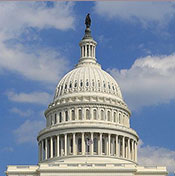
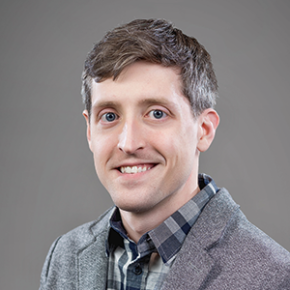 “Understanding geography is a critical foundation to a GIS career path,” says Sean O’Brien who works as a GIS Analyst for U.S. Bank. In his work, O’Brien tackles massive databases to analyze the activity of bank customers and branches as well as advise and assist other bank departments with their geographic needs. As GIS becomes a growing necessity for business, O’Brien stresses that geographic knowledge, the ability to use Python, and networking skills are all essential pieces of a successful career.
“Understanding geography is a critical foundation to a GIS career path,” says Sean O’Brien who works as a GIS Analyst for U.S. Bank. In his work, O’Brien tackles massive databases to analyze the activity of bank customers and branches as well as advise and assist other bank departments with their geographic needs. As GIS becomes a growing necessity for business, O’Brien stresses that geographic knowledge, the ability to use Python, and networking skills are all essential pieces of a successful career.
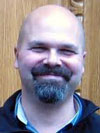 Social media can be dangerous. I recently read a post on Twitter, sent by a non-geographer, which seemed to lament geography’s absence from the Ivy League and similarly selective private institutions.
Social media can be dangerous. I recently read a post on Twitter, sent by a non-geographer, which seemed to lament geography’s absence from the Ivy League and similarly selective private institutions.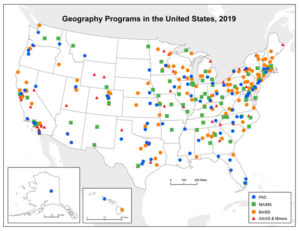 Professors lucky enough to obtain full-time employment find themselves in a variety of job environments and at different types of institutions with varied research expectations, teaching loads, and opportunity to mentor graduate students. Some geographers stand alone in a department with other faculty; other geographers are part of a large unit with 20 or more faculty and an opportunity to specialize in their specific subfield.
Professors lucky enough to obtain full-time employment find themselves in a variety of job environments and at different types of institutions with varied research expectations, teaching loads, and opportunity to mentor graduate students. Some geographers stand alone in a department with other faculty; other geographers are part of a large unit with 20 or more faculty and an opportunity to specialize in their specific subfield.